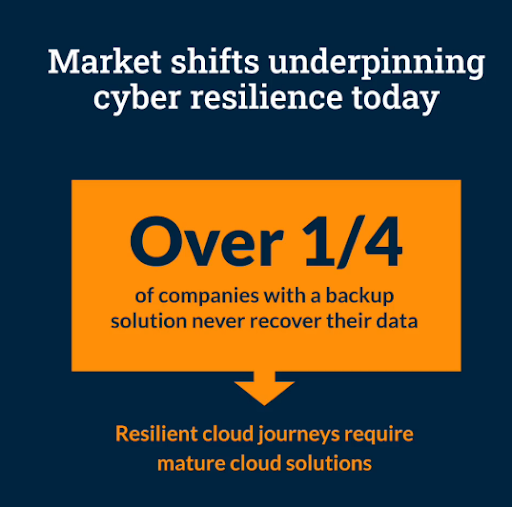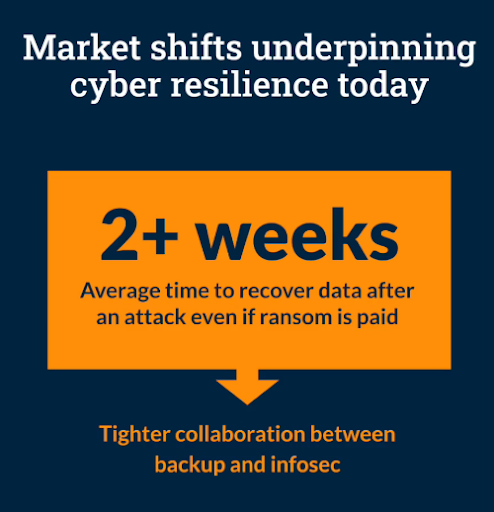Big budgets, the latest tools, and increased manpower are not enough to be cyber resilient. You must have the right strategy and a thorough plan to deal with the next potential attack.
The strategy might differ depending on your industry and type of business. However, ensure that you don’t make these common mistakes while creating your cyber resilience strategy.
Don’t downplay the risks of ransomware
There are companies that are not prepared with a protection solution and an action plan in the event of a ransomware attack on their data. They don’t think there’s an imminent risk, however, when several of their systems can become infected they may be forced to negotiate with the attacker for ransom.
According to a Gartner analysis of clients’ ransomware preparedness, over 90 percent of ransomware attacks are preventable with sound security fundamentals, including an effective backup and recovery strategy.
Whether your company is well established or a startup, and whether you use older technology or cloud-native solutions, you must protect yourself from ransomware. Otherwise, you risk losing business-critical data that is your company’s lifeblood. To make things worse, ransomware might expose your customer’s data and lose their trust, your source of revenue, and your ability to recover.
In this video, Larry Hughes, a cyber security expert, describes why best practices around cyber security are evolving and how securing your organization’s data protects you as well as those doing business with you.
Don’t go for it alone
Today’s ransomware attacks are not from elite hackers who are targeting the largest institutions of the world. Unfortunately, Ransomware-as-a-Service is rampant. You face an army of attackers from around the world that can be hired by bad actors. The only way to defend yourself is to get your own army working on your behalf.



